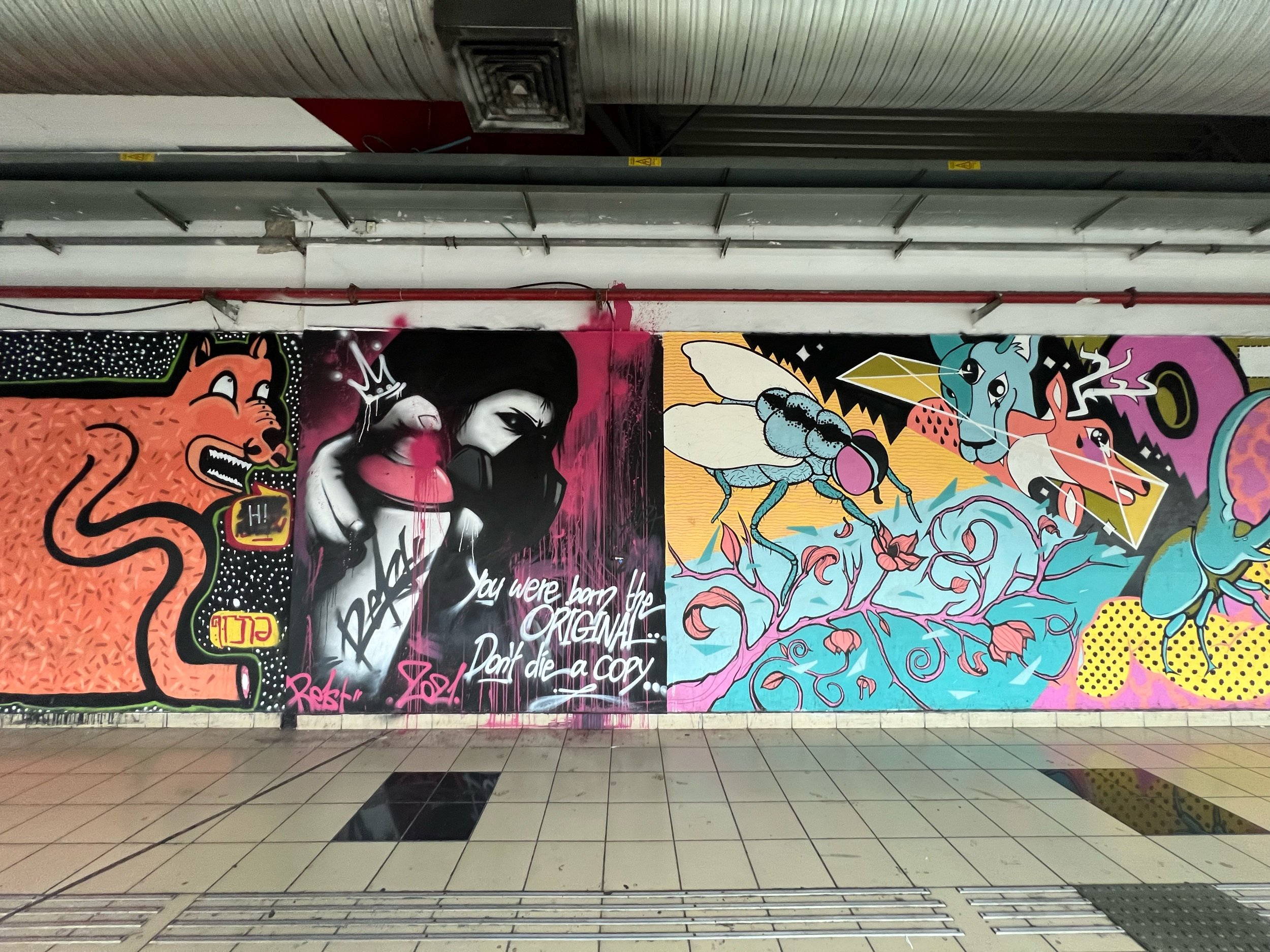
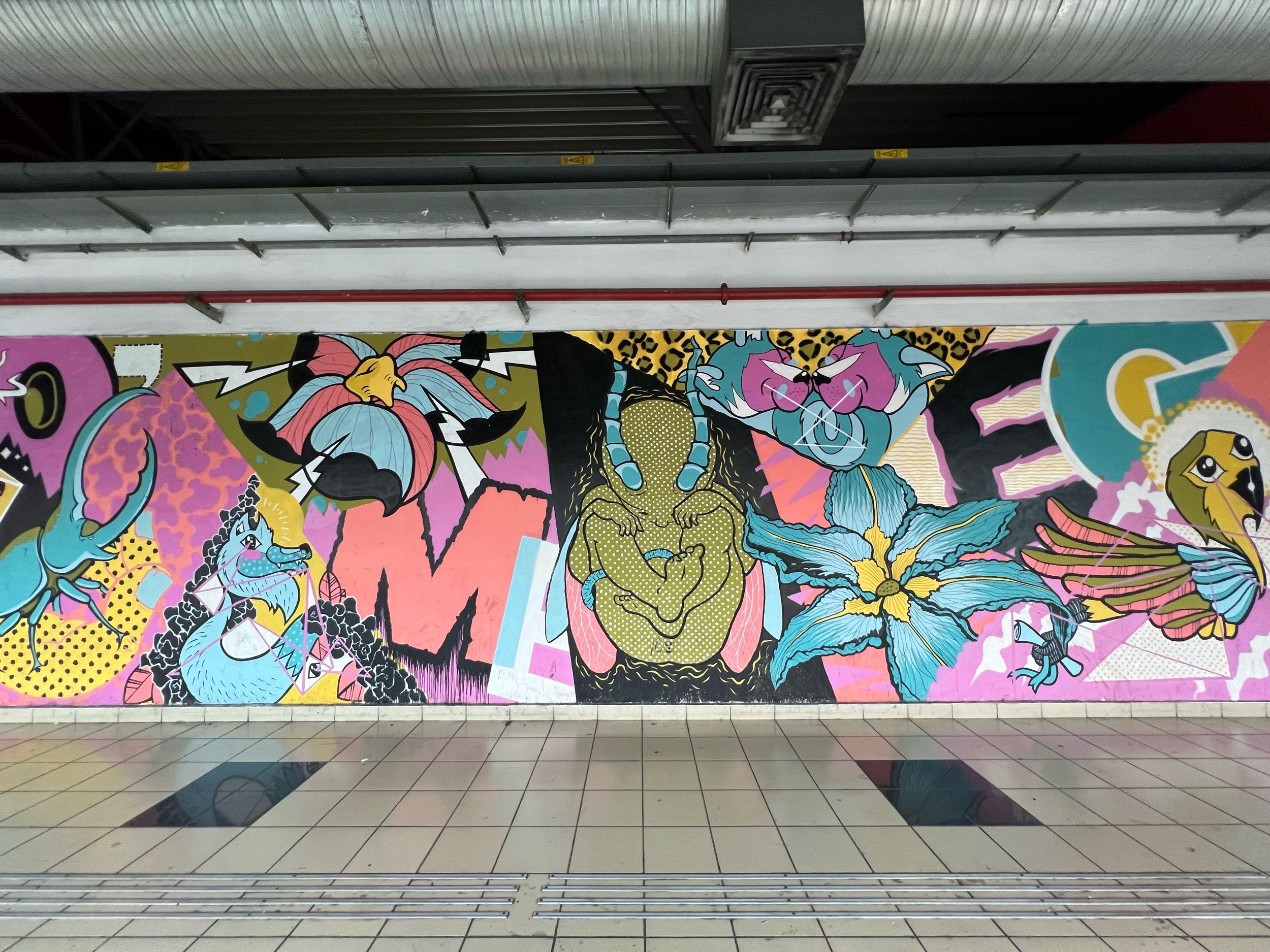
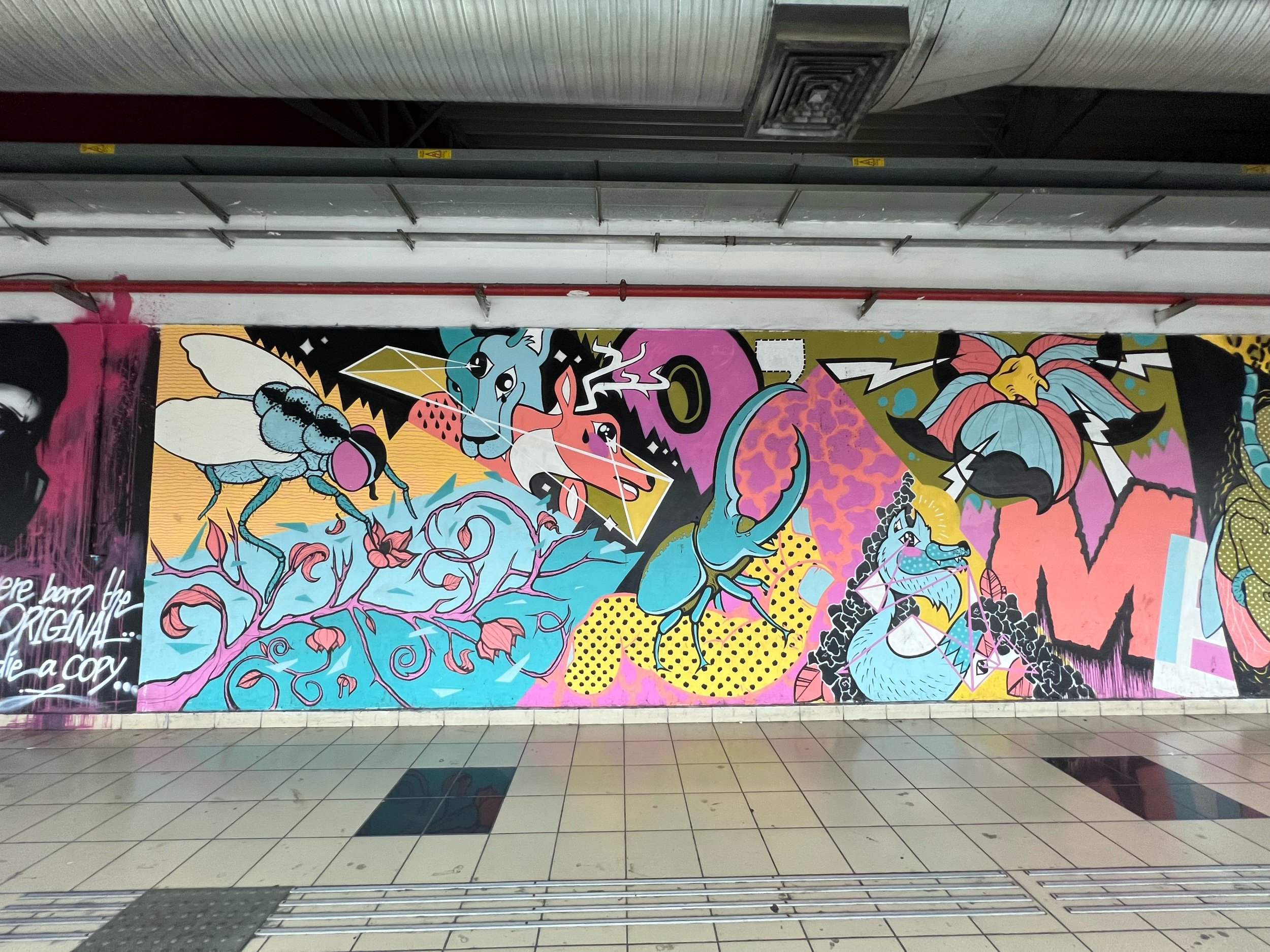
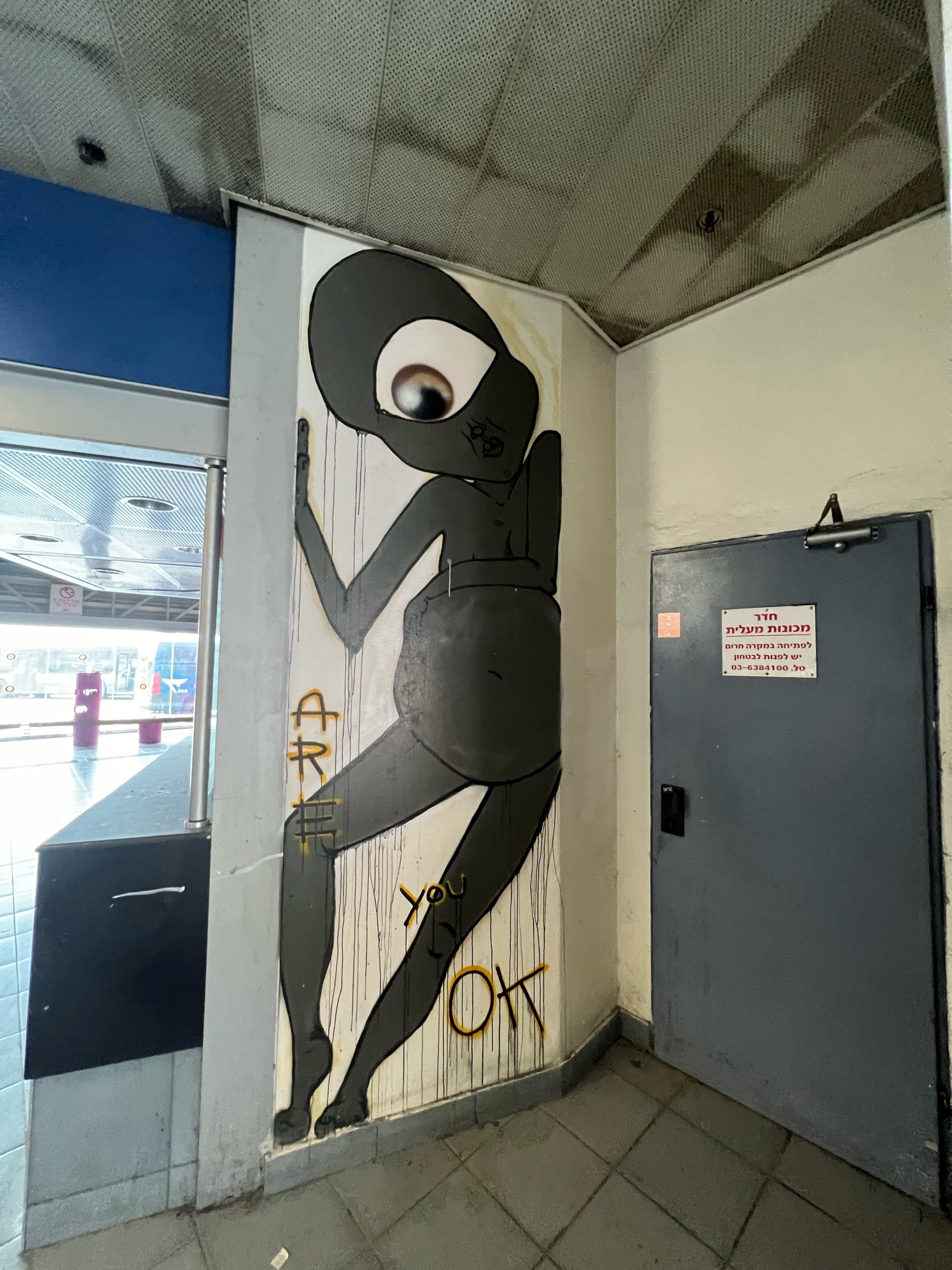
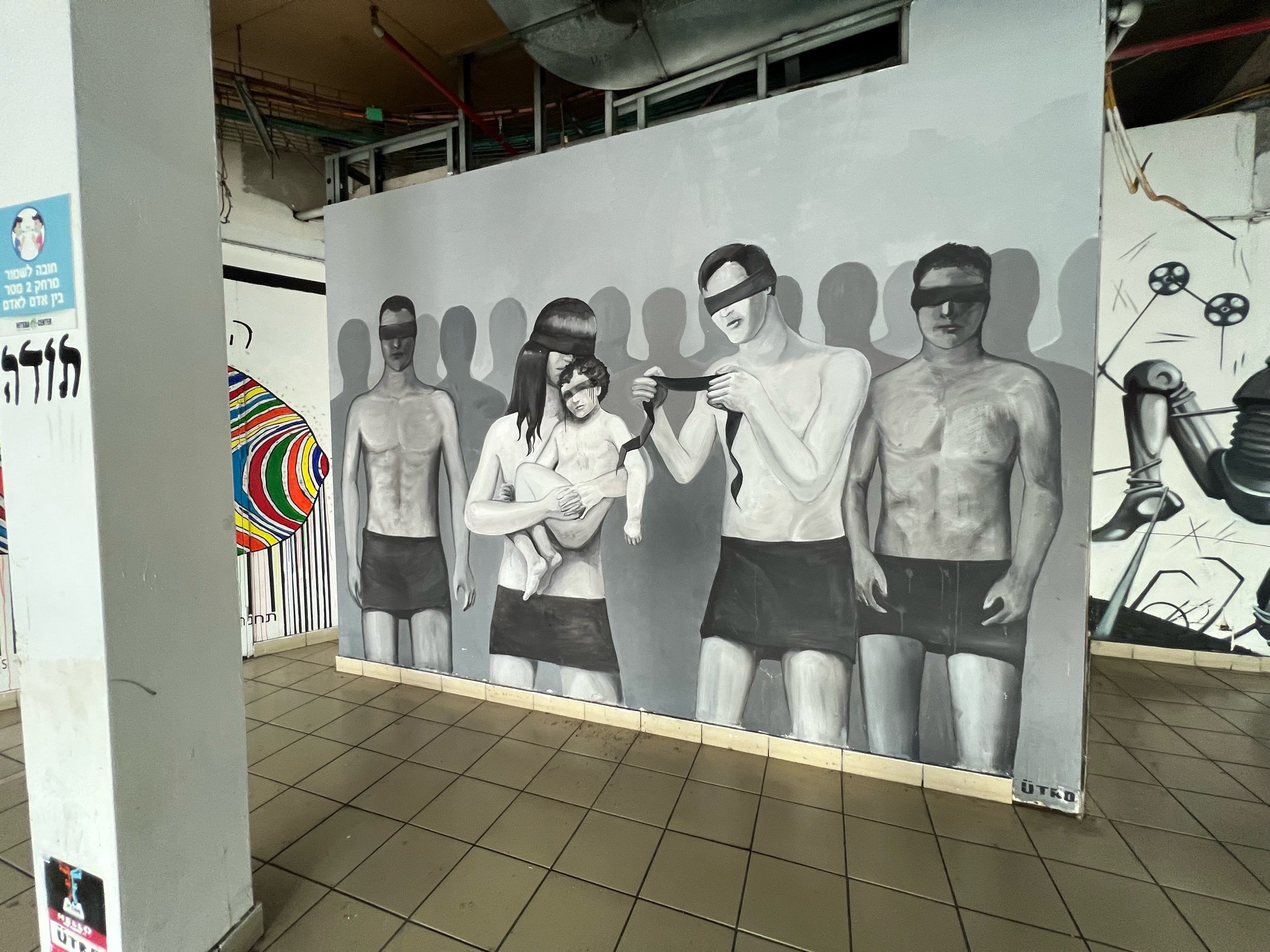
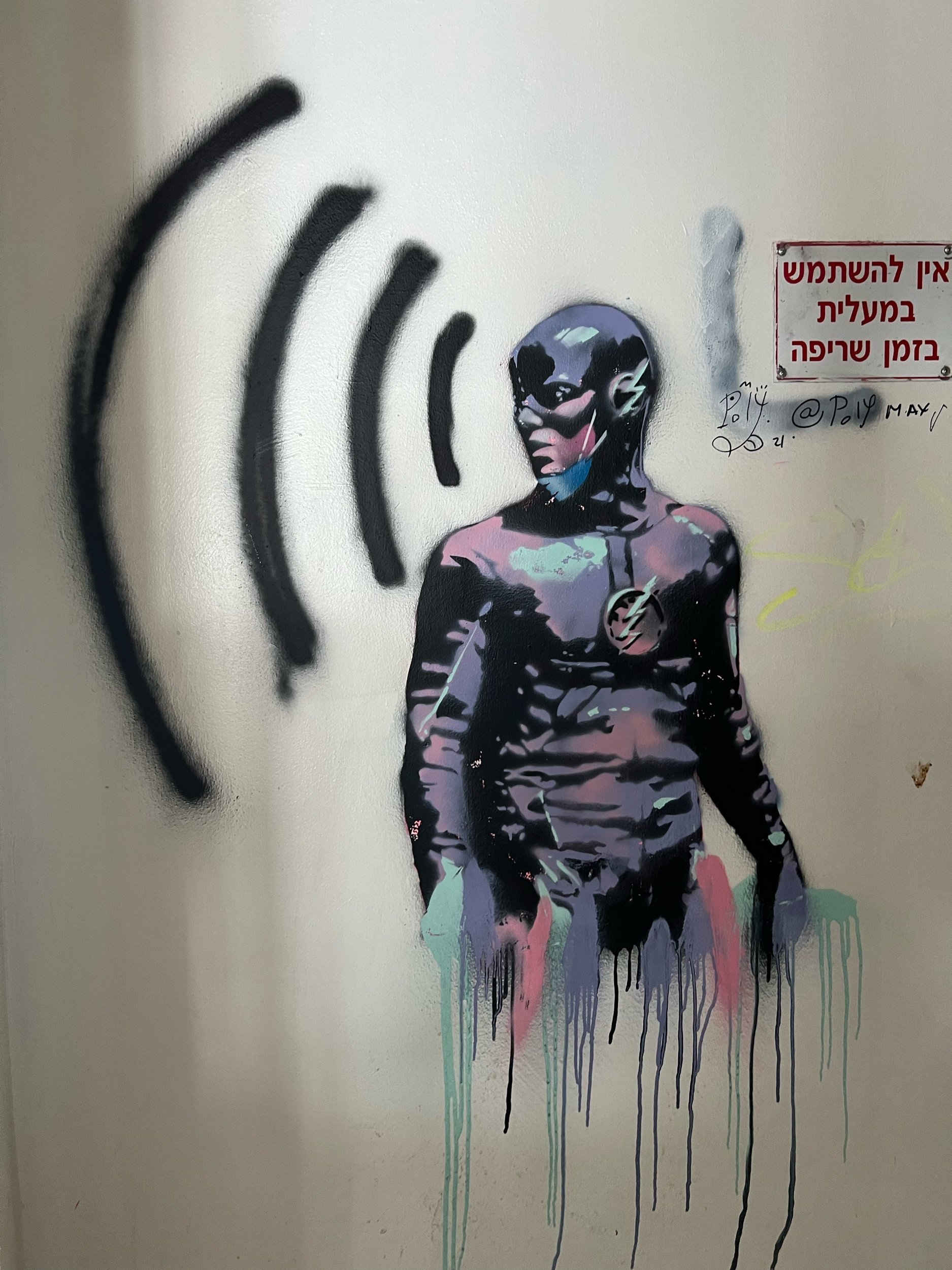

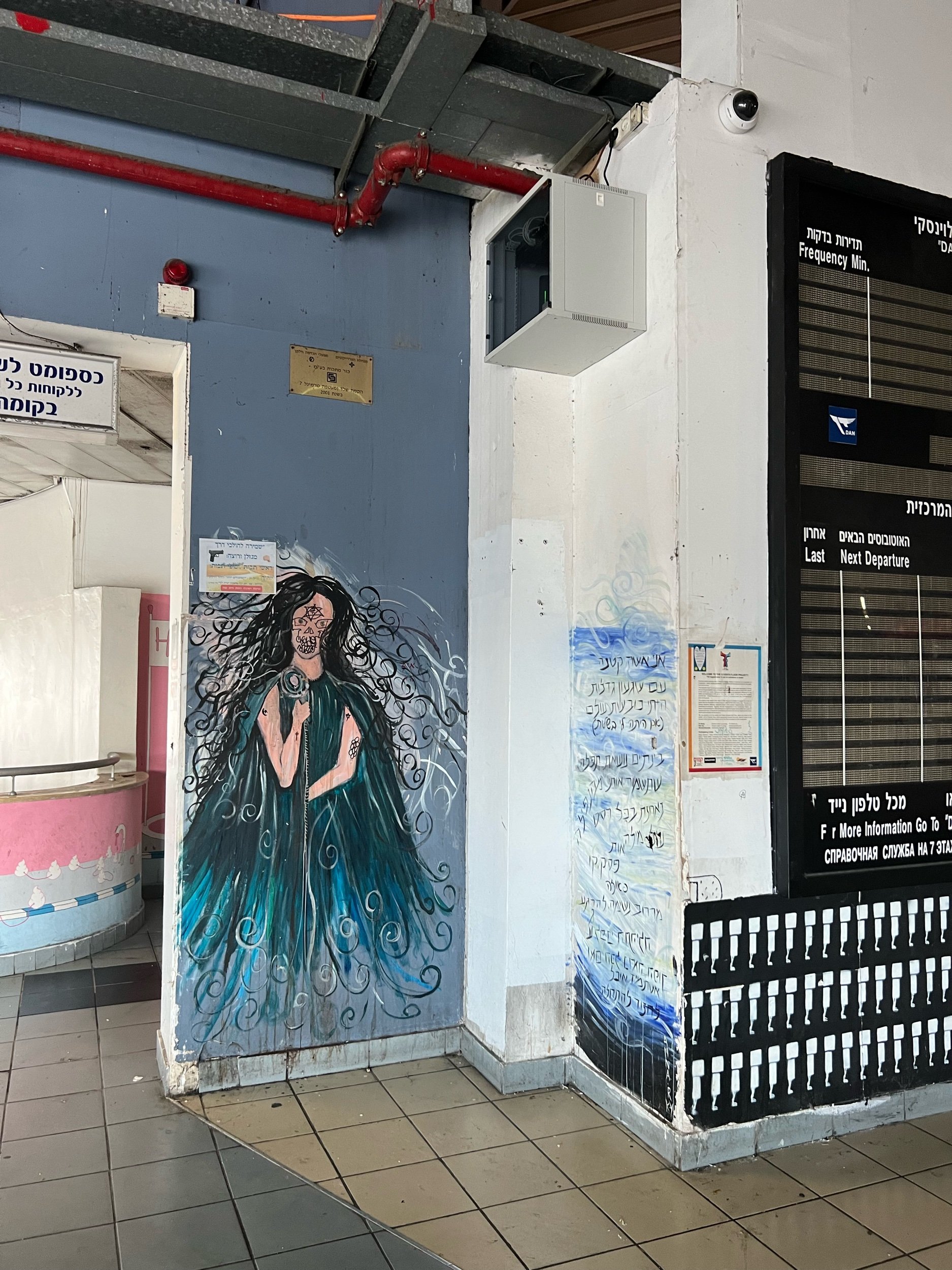

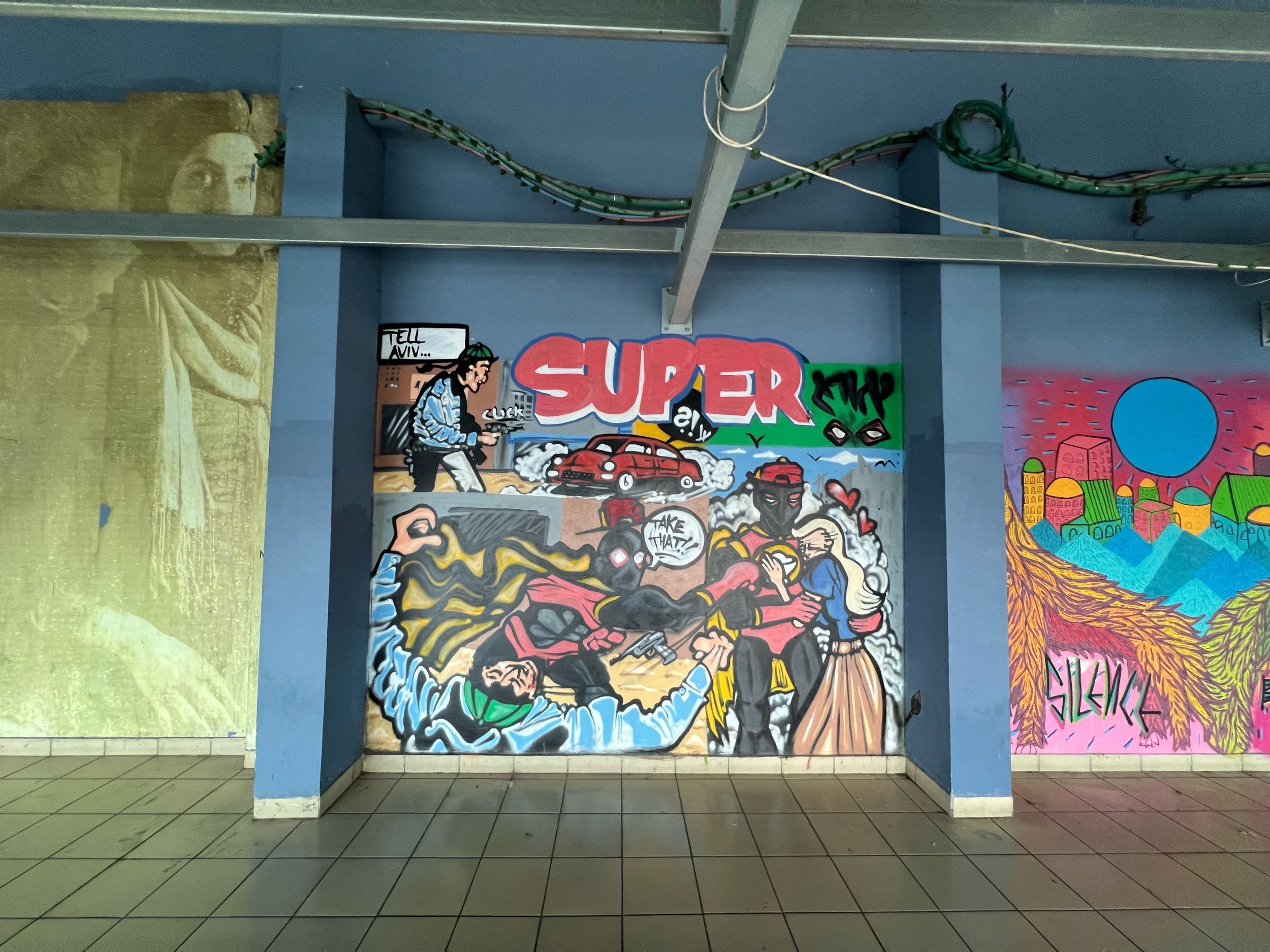
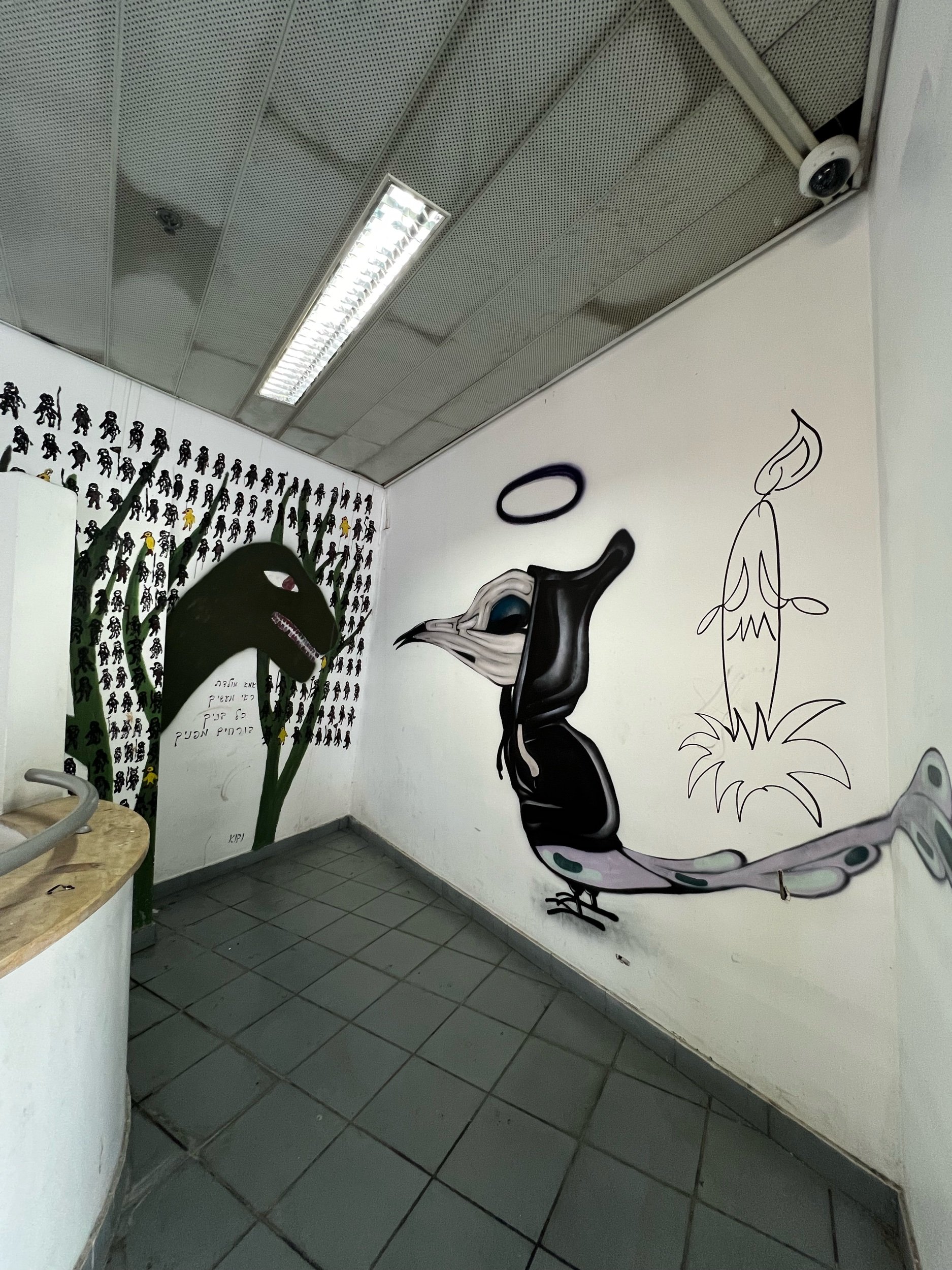
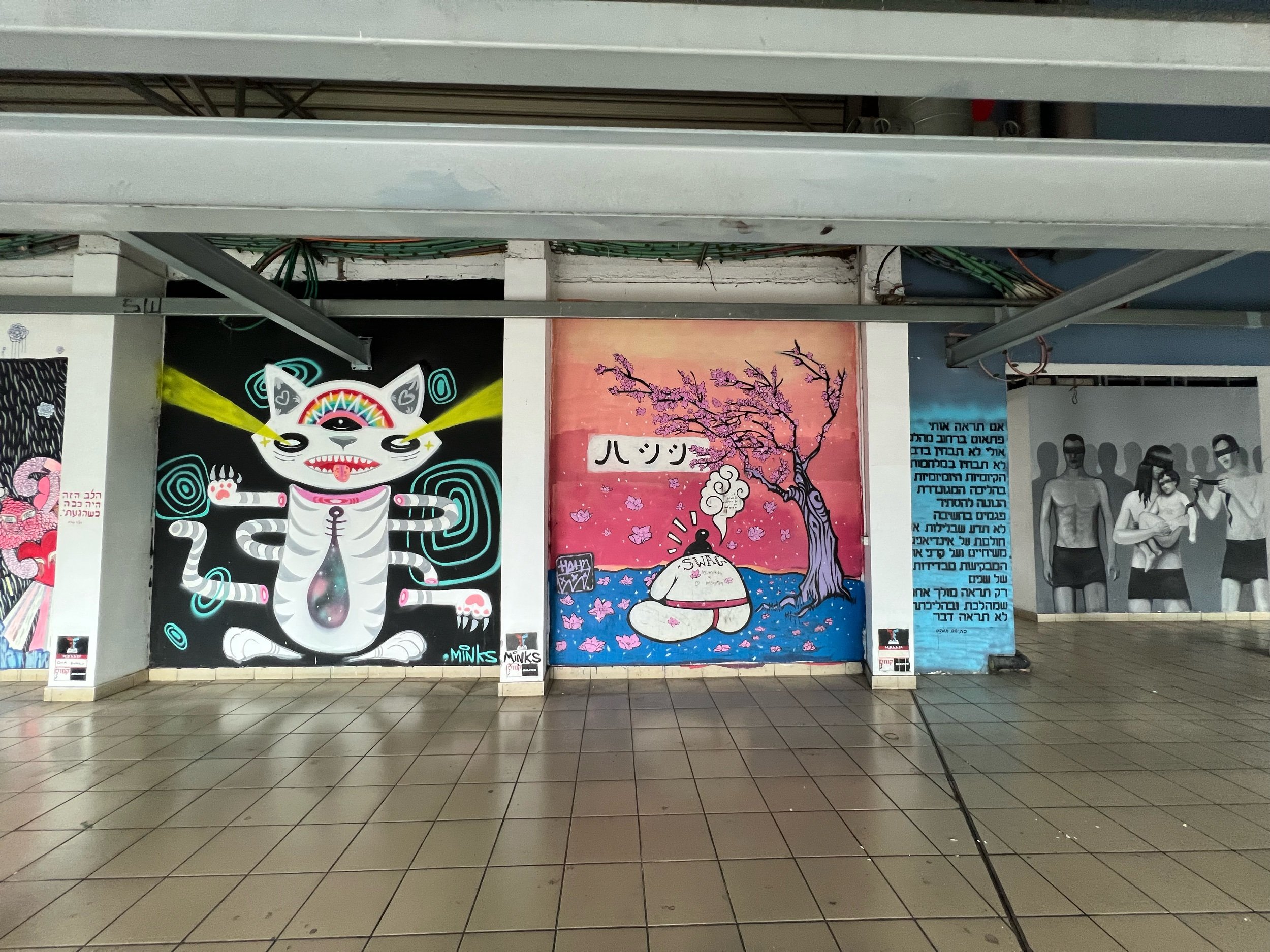
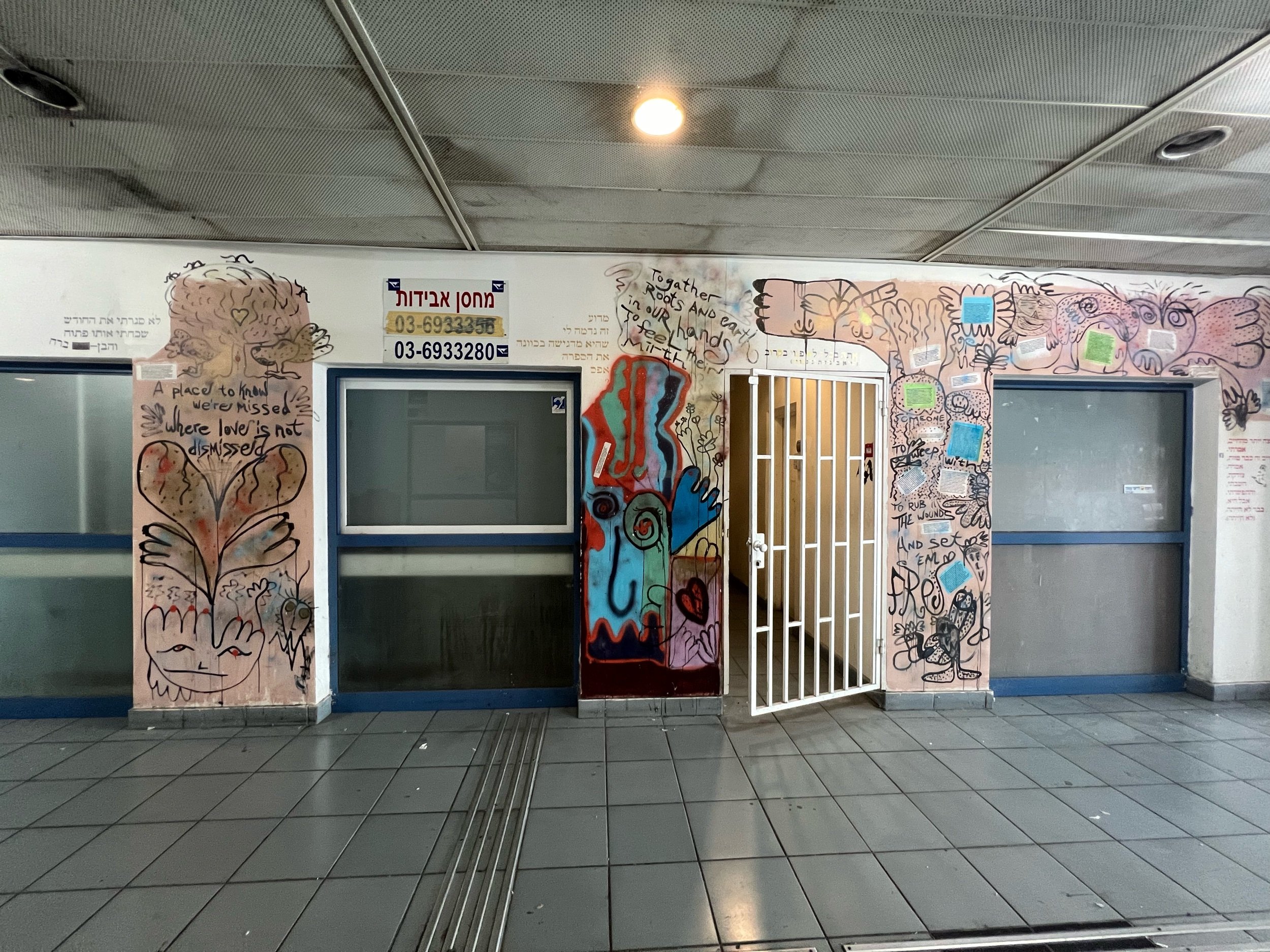

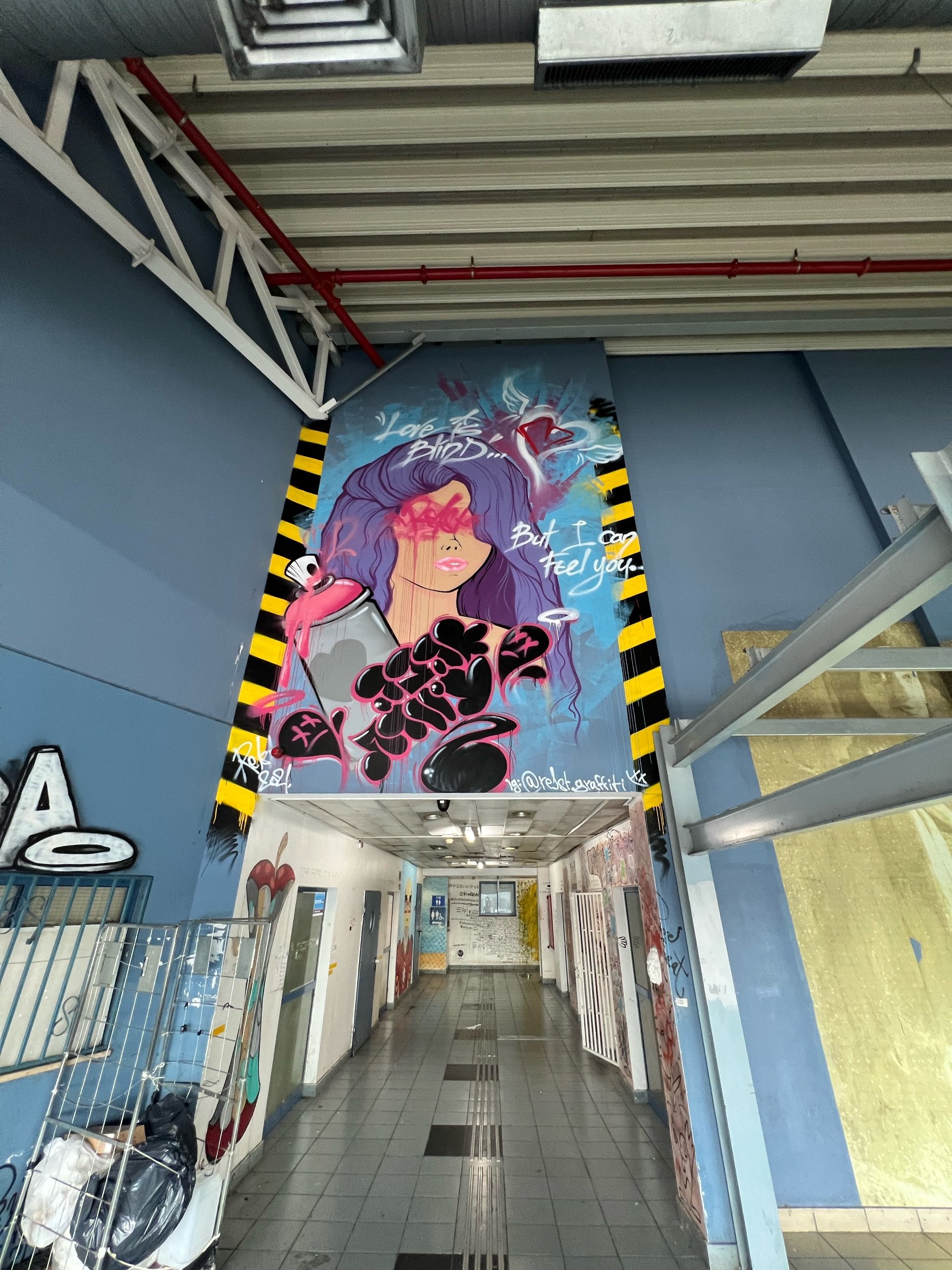
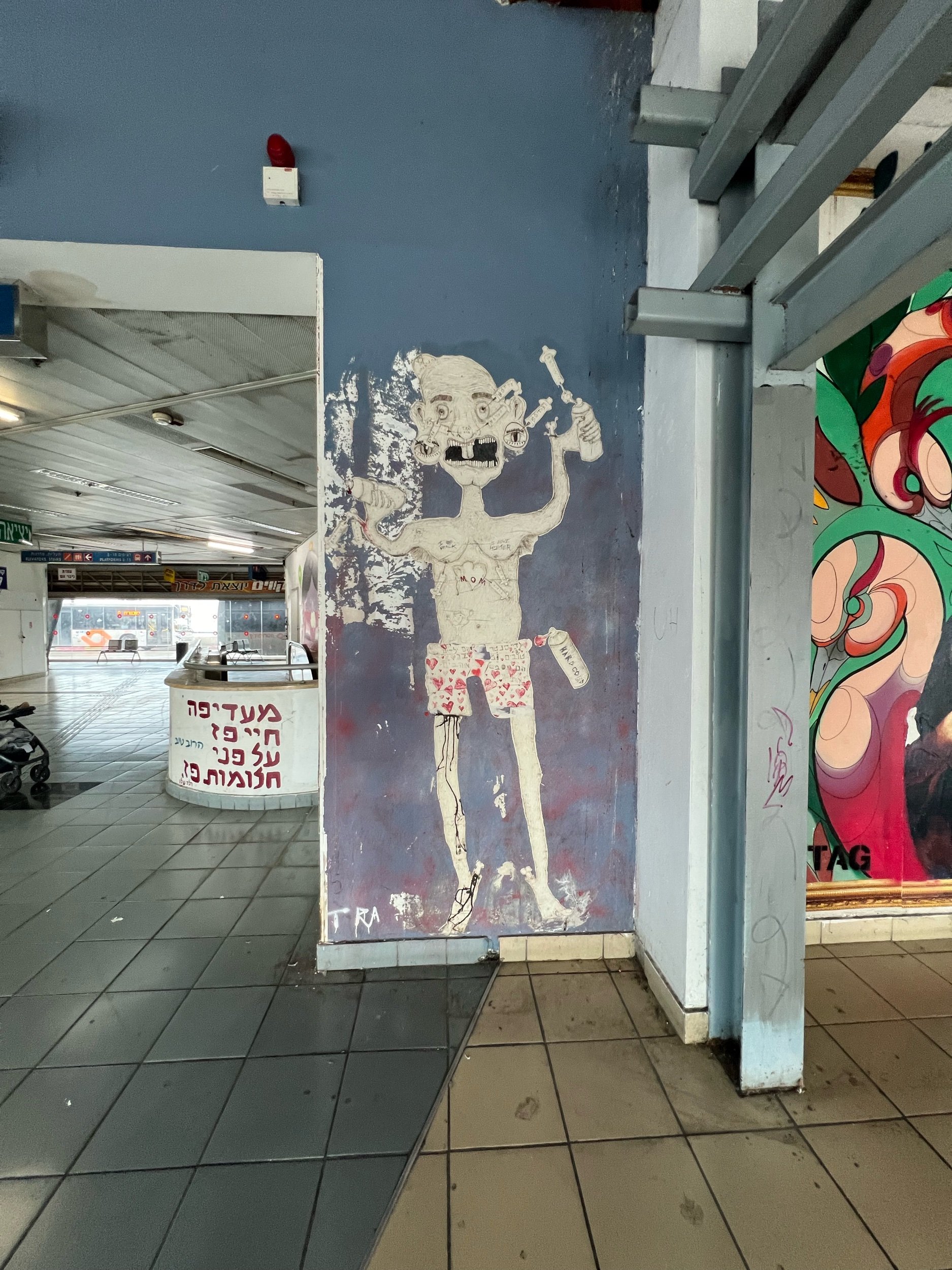
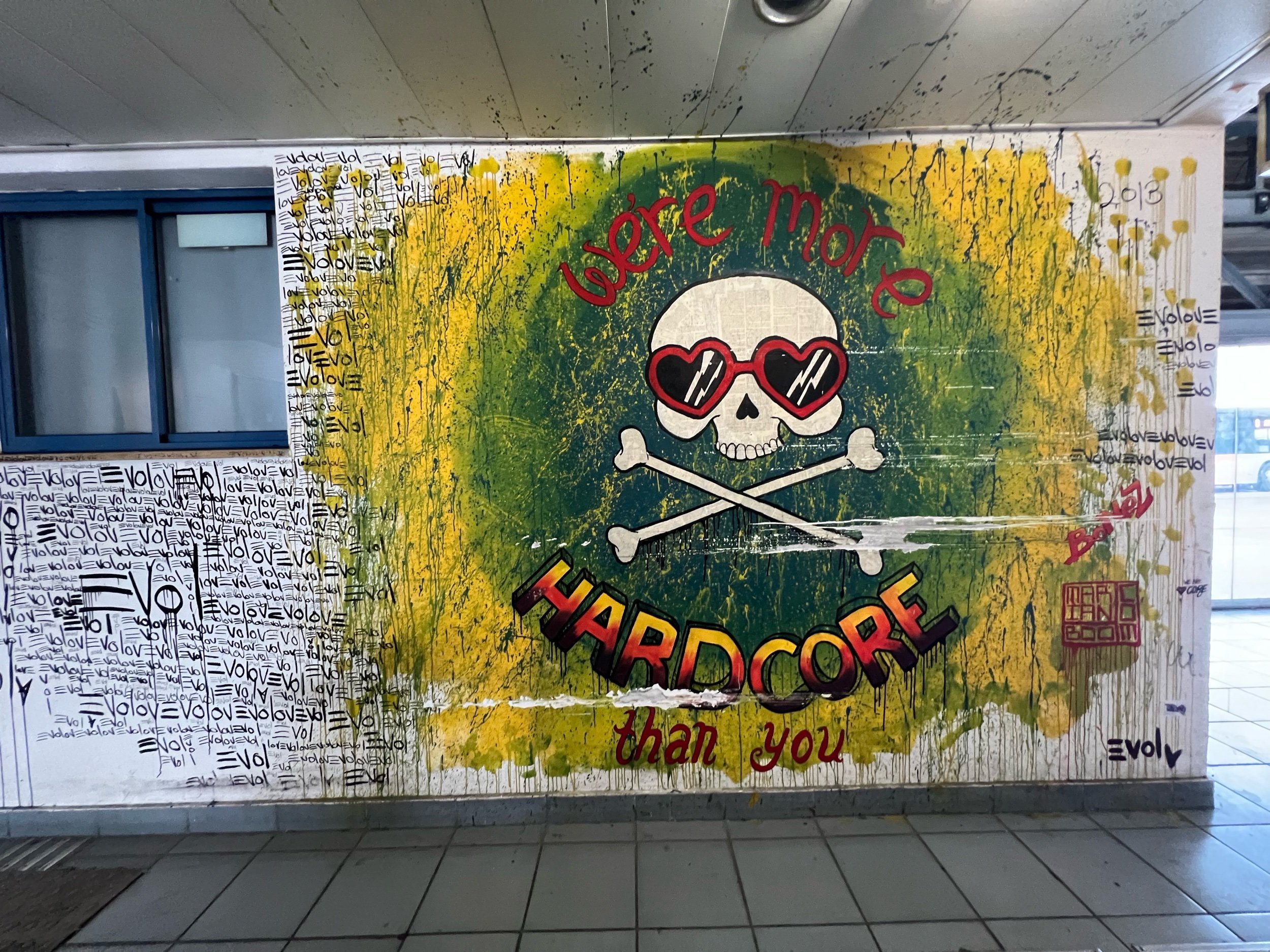
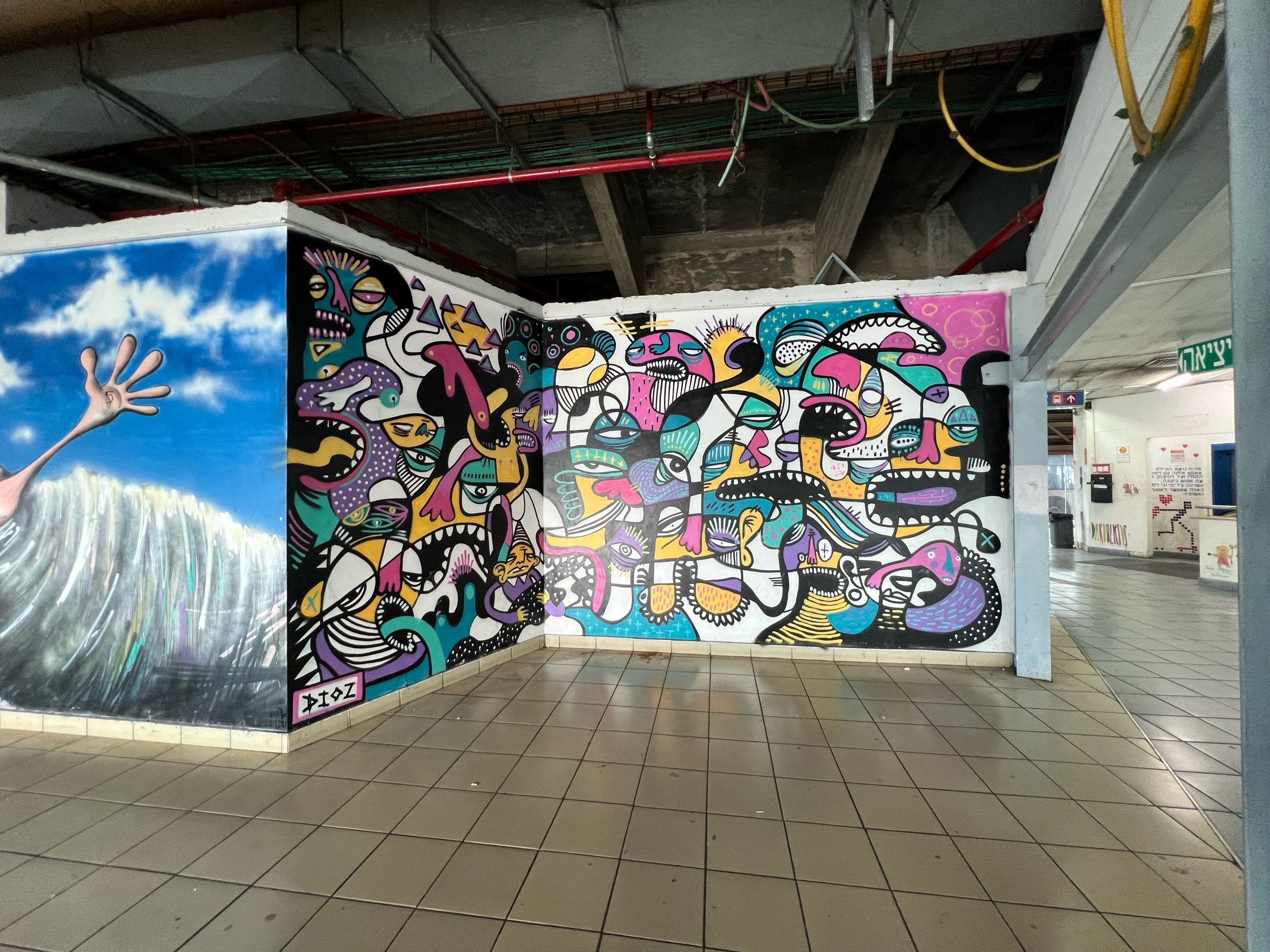
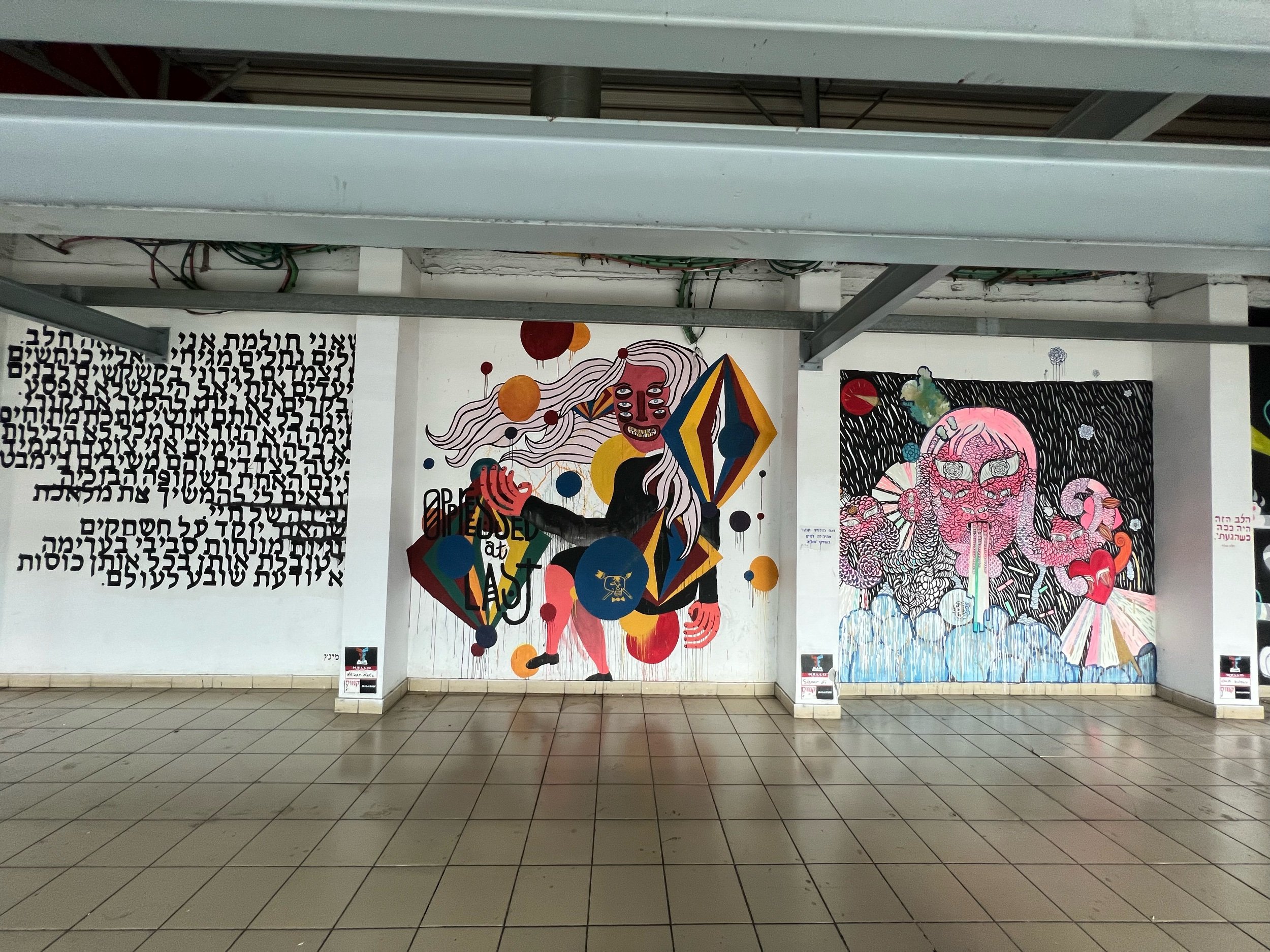
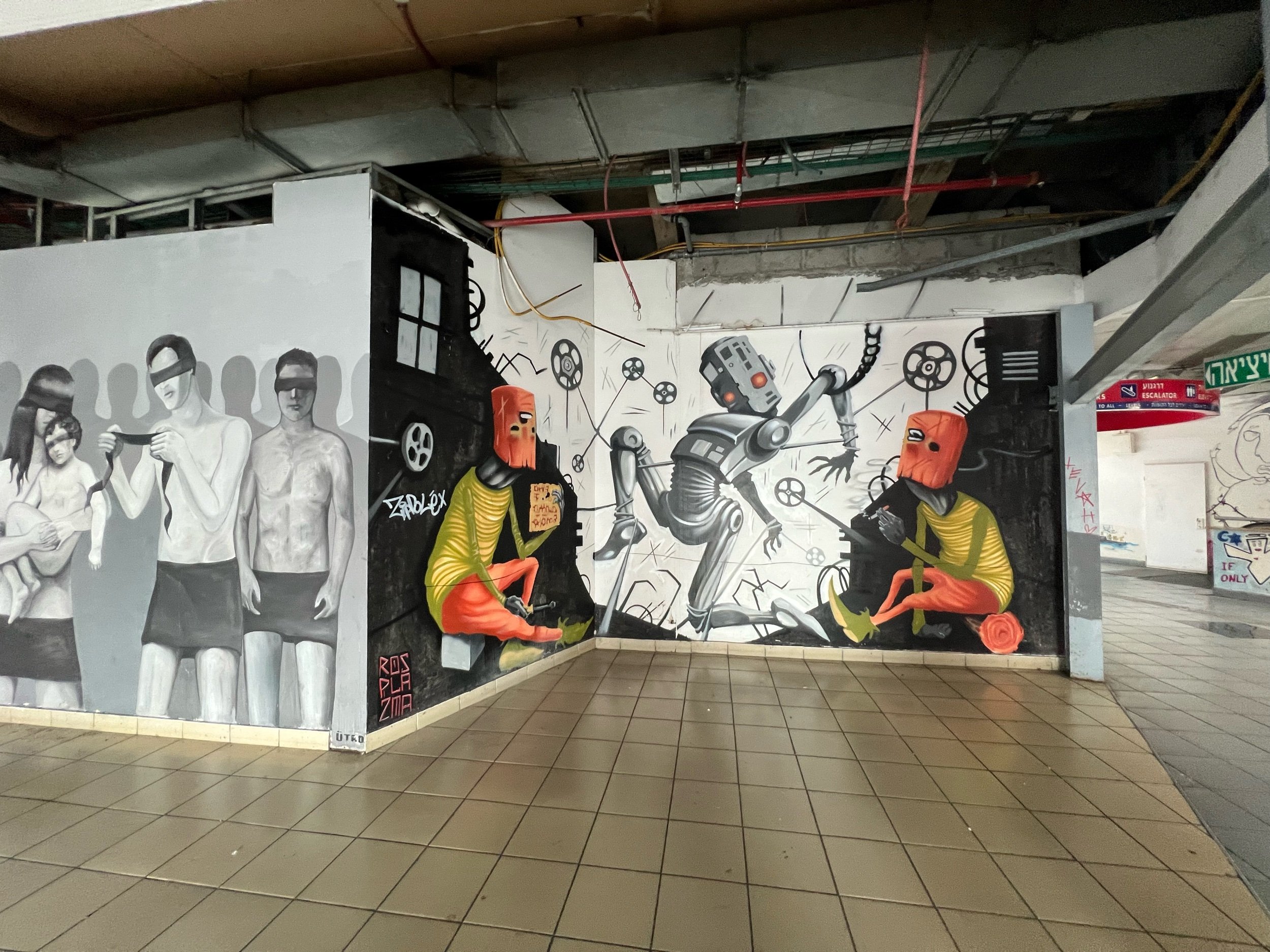
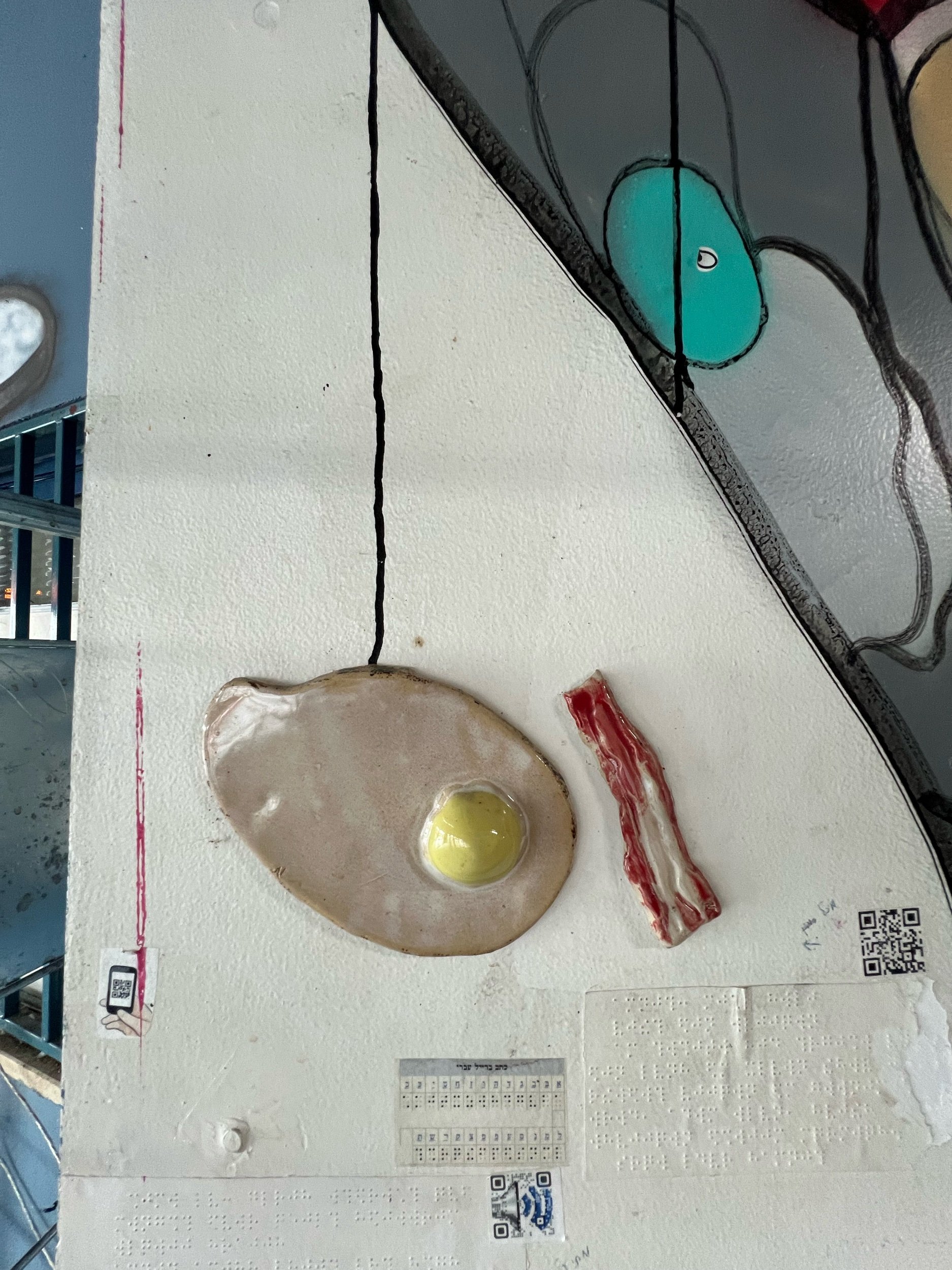
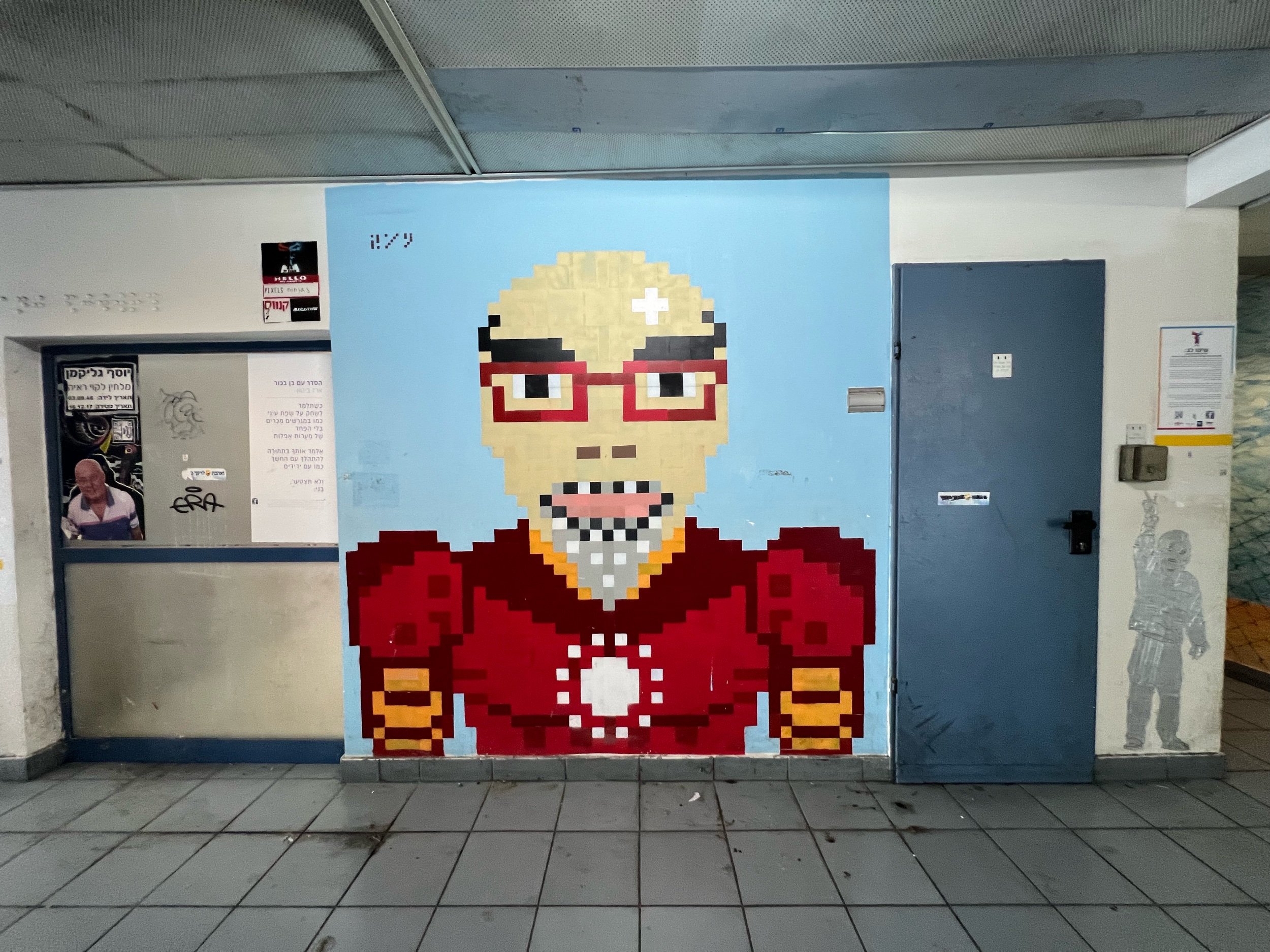
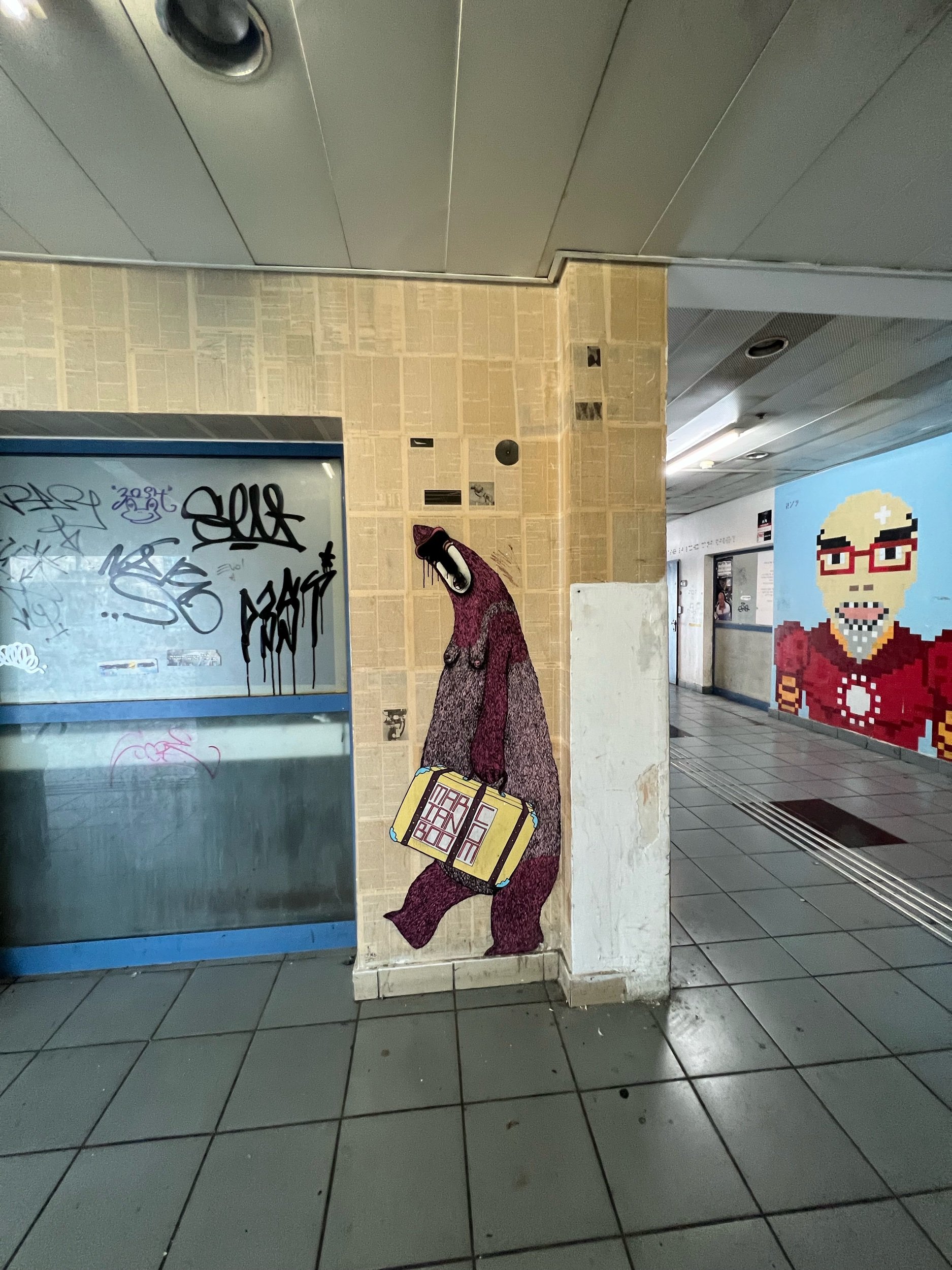
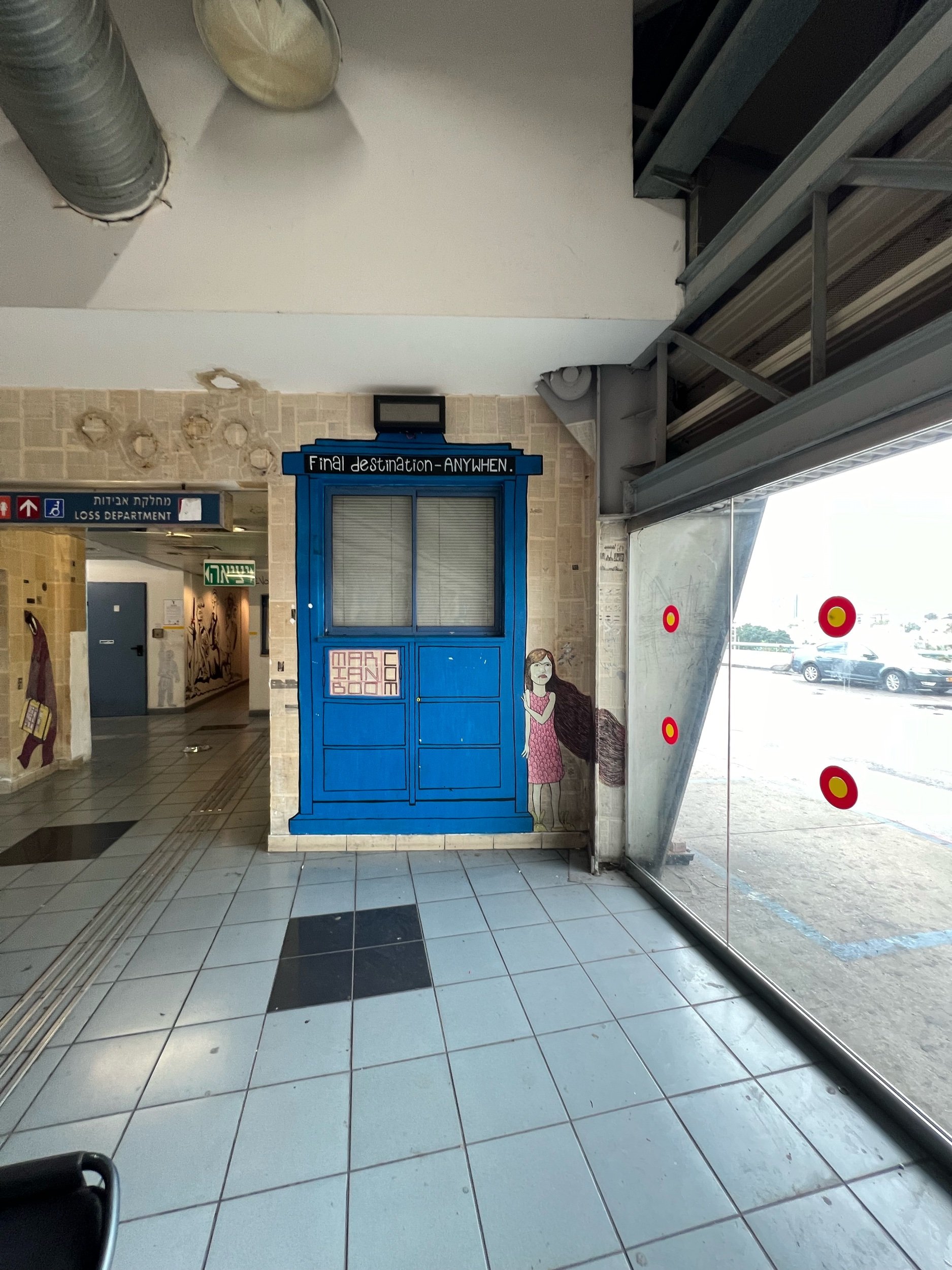
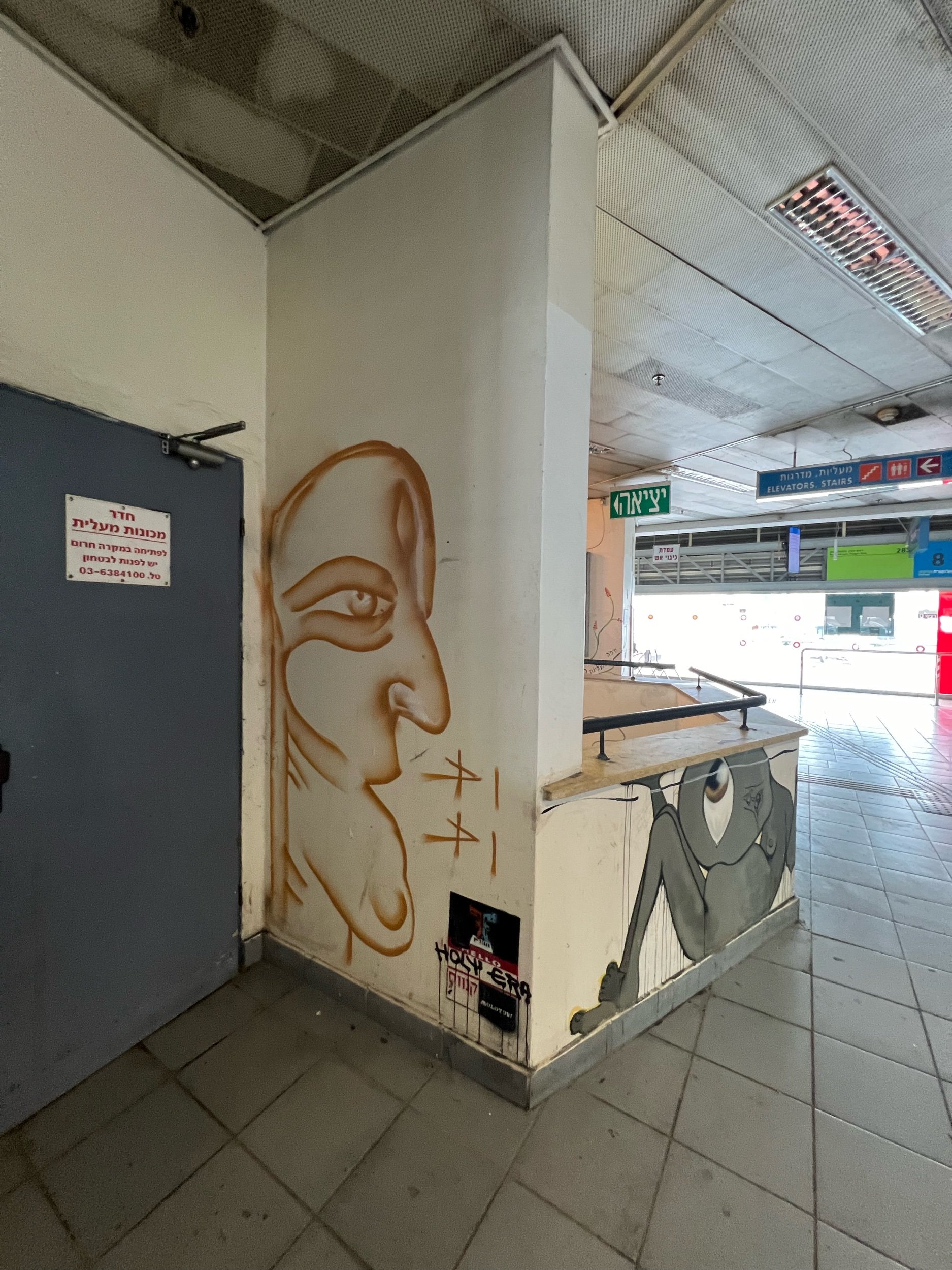
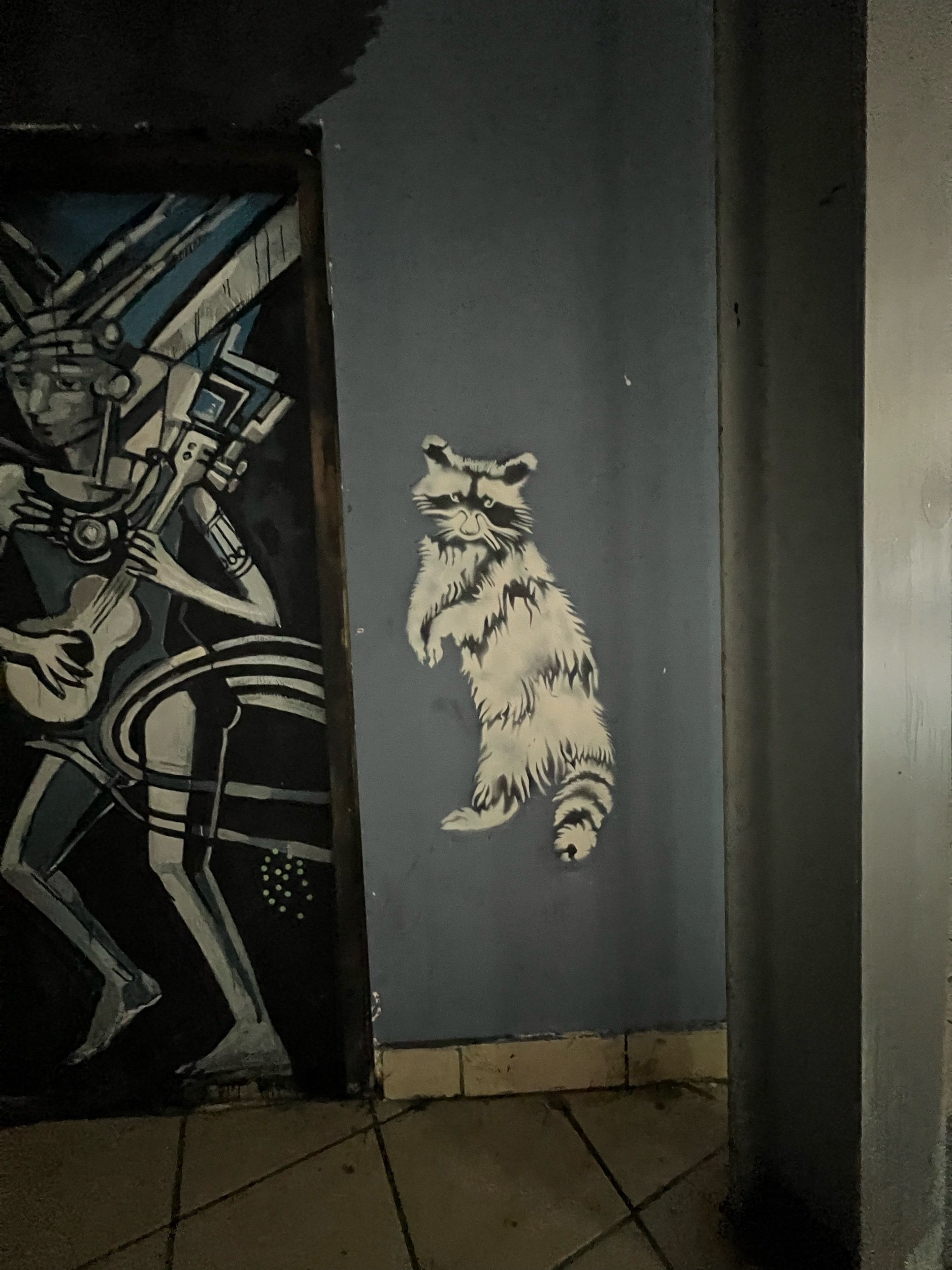
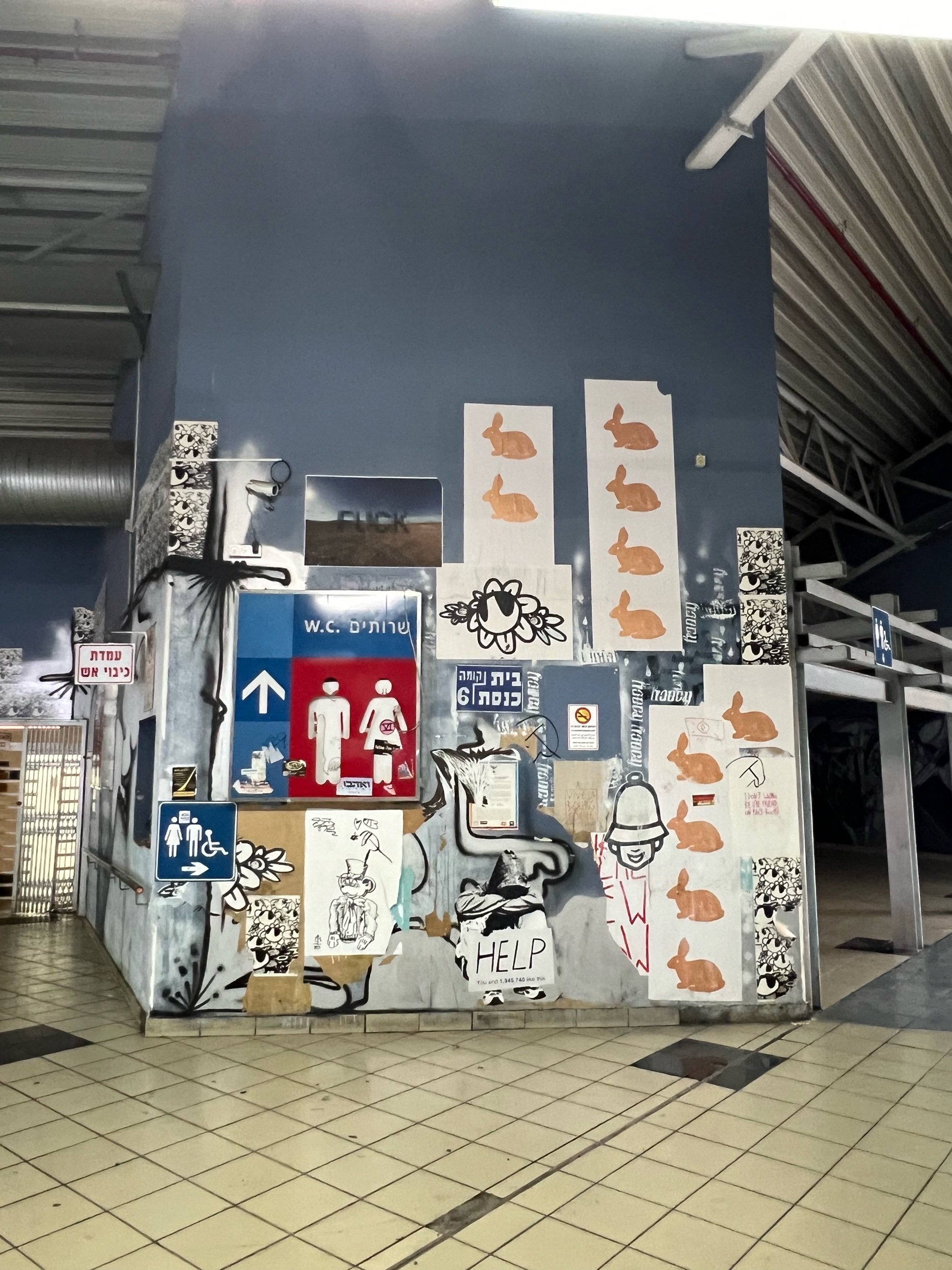
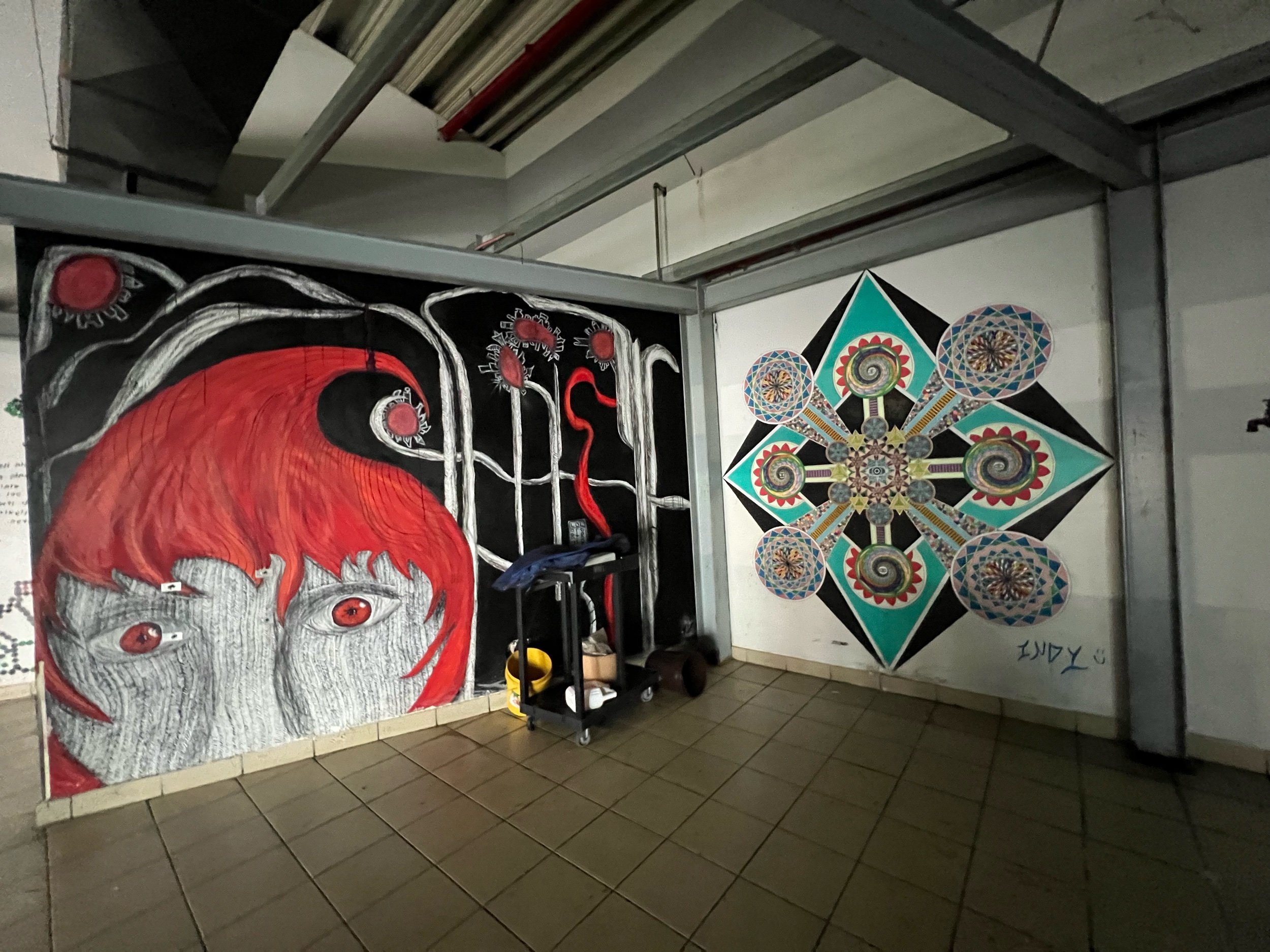
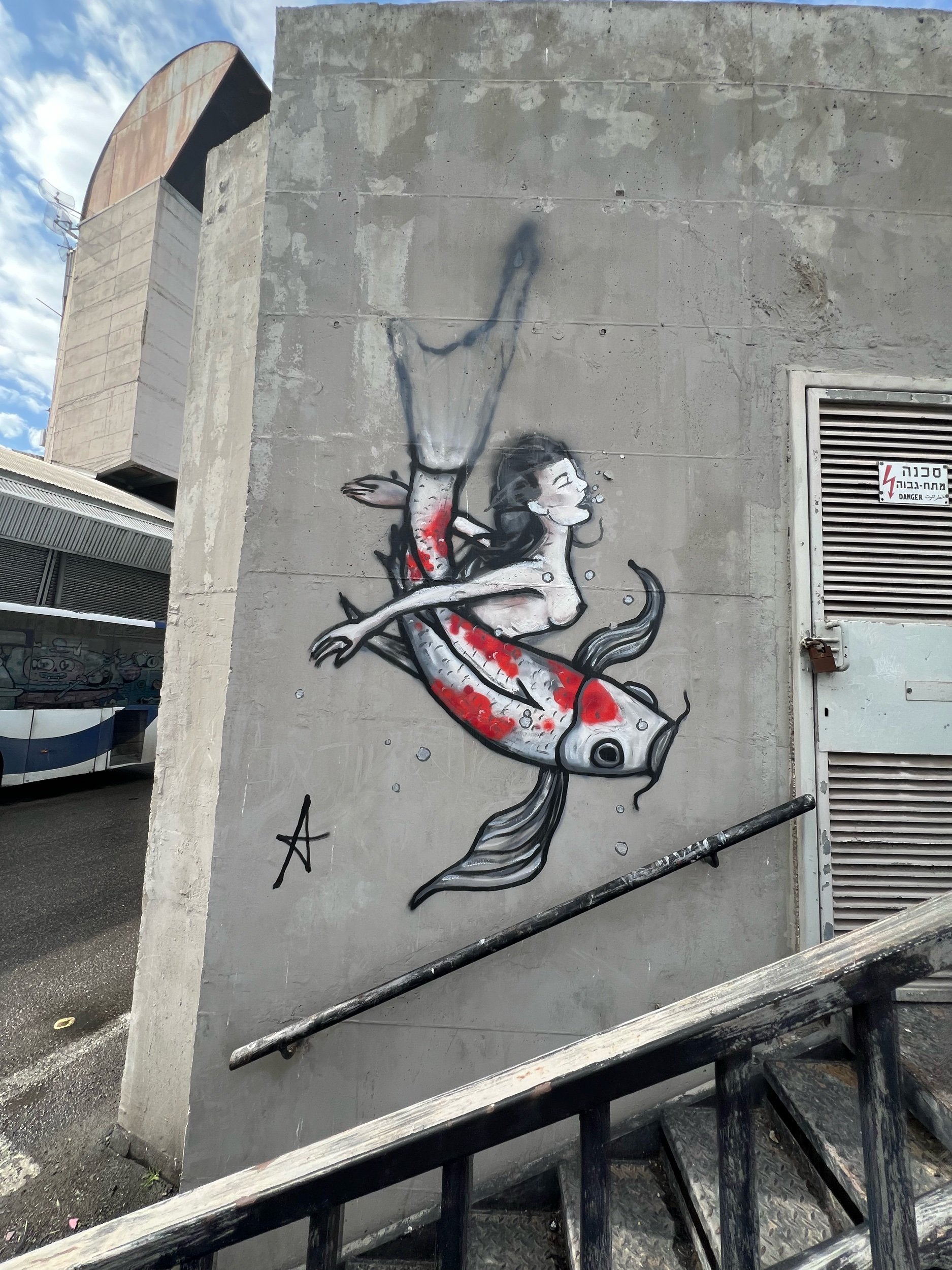
Israel is a vibrant country pulsating with life. Street art (visual artifacts) serve as powerful reminders of the culture wars within and outside its borders. Among the myriad of artistic expressions within its diverse urban landscapes, war-related street art stands out with its evocative imagery and thought-provoking messages. In the heart of Tel Aviv, for example, spray-painted murals depict scenes of conflict, standing as silent witnesses to the ongoing battles fought throughout Israel's history and the present war with Hamas. Beyond the physical depictions, Israel’s Street art manifests the ongoing cultural battles fought within society. It serves as a platform for dissenting voices, challenging mainstream narratives, and provoking dialogue about the complexities of war and its impact on daily life.
This is a non-partisan project documenting Street art as visual artifacts of culture wars.
Levinton Street at Yehuda Ha’levy, TLV
Kiryat Hamelacha, TLV
The Faces of Kiryat HaMelacha, TLV
Kiryat Hamelacha in Tel Aviv has undergone a significant transformation, evolving from a former crime hub into a vibrant hub of artistic expression. Street art, adorning the neighborhood walls with captivating murals and graffiti, is pivotal in this transformation.
Dror Hadadi's documentation of graffiti in Kiryat Hamelacha showcases the diversity and richness of the street art scene in this area. The graffiti is an aesthetic addition and reflects the neighborhood's resilience and revival [1][2]. Street art and gallery tours allow visitors to explore and appreciate the vibrant street art scene in Kiryat Hamelacha, offering insights into the stories behind the murals and the artists who bring them to life [3].
Kiryat Hamelacha stands as a testament to the transformative power of street art, turning an urban space into a visual celebration of creativity, community, and cultural resurgence.
Imaginary Duck
Also known as I.D., Imaginary Duck is a prominent street artist based in Tel Aviv, specializing in 3D materials, graffiti, and other artistic forms. The artist, Yulia Shtengelov, has been active in the field for over a decade, leaving her mark on various locations in Tel Aviv, Jerusalem, Ra’anana, and more [1][2]. Using the alias Imaginary Duck, she creates portraits of a young girl in many poses and with friends, often captivating varying emotions, roles, and scenes. Her work often features 3D materials, showcasing her unique style and talent in the graffiti scene.
https://www.facebook.com/imaginaryduck77
Sources:
The Free Pink Movement in Israel
The Free Pink movement in Israel symbolized resistance against the government, particularly associated with anti-Netanyahu protests. The movement adopted pink, drawing inspiration from the re-enactment of the raising of the Ink Flag, a significant event in Israel's War of Independence [1]. Often stylized as the "Pink Front," the movement signifies unity and solidarity, fostering a sense of community among protestors. Pink has become iconic, representing a collective stand against political issues.
The movement's influence extends beyond Israel, with Code Pink: Women for Peace being an internationally active left-wing anti-war organization. Code Pink supports various causes, including advocating for peace and human rights and opposing U.S. wars and militarism [2]. The Pink Front is a powerful visual expression, embodying the spirit of resistance and collective action against perceived injustices.
1. Haaretz: How Pink Became the Color of the anti-Netanyahu Protests
2. https://en.wikipedia.org/wiki/Code_Pink
Jerusalem: A Canvas for expression
Jerusalem's dynamic tapestry of cultures, religions, and languages provides endless inspiration for Street artists and graffiti writers. As you walk in the labyrinthine of streets, viewers will witness the interplay between sacred and secular, tradition and innovation. The vibrant colors, intricate designs, and expressive approaches celebrate Jerusalem's unique character.
Courtesy: Noam Gal, Jerusalem, 2023
Visual messaging
Street art plays a vital role in visual messaging as it is a powerful form of public expression. It is an engaging art form that transcends traditional artistic boundaries and limitations. While some artwork may be purely visual, capturing attention with its vibrant colors and intricate designs, others carry a profound depth of meaning beneath their surface. These thought-provoking pieces serve as visually stimulating narratives, conveying powerful messages about society, politics, and the human condition. Street art's ability to be visually appealing and laden with meaning showcases the versatility and impact of this artistic medium.
Icons on the street
Iconography plays a significant role in Street art as a powerful tool for communicating messages and sparking social commentary. Whether using symbols, figures, or objects, these visual narratives provoke thought, challenge norms, and ignite conversations within the urban landscape. Street artists can tap into collective cultural consciousness by utilizing recognizable iconography, making their art accessible and relatable to a diverse audience. Ultimately, incorporating iconography in street art helps convey complex ideas, highlights societal issues, and fosters a sense of community engagement through visual storytelling.

Yahuda Ha'-Levy Street at Hertzl Street, Tel Aviv, 2023
Courtesy: Emma Hatgan, Tel Aviv, Israel, 2023
Read MoreCourtesy: Noa Turgeman, Tel Aviv, Israel, 2023
Read MoreReturning after Oct 7 attacks
We evacuated from Israel near the beginning of the Hamas-Israel war. As a parent, when we returned, I decided it was important for me to document street art regarding the the children taken by Hamas.
The street art depicting children taken hostage carries immense importance in raising awareness of these and other atrocities committed by Hamas.. These artworks not only give a voice to the voiceless but also act as a powerful reminder that it is our collective responsibility to protect the innocence and well-being of children caught in the horrors of conflicts. This street art serves as a visual call to action, urging society to address the issue and strive for a better, safer world for all children.